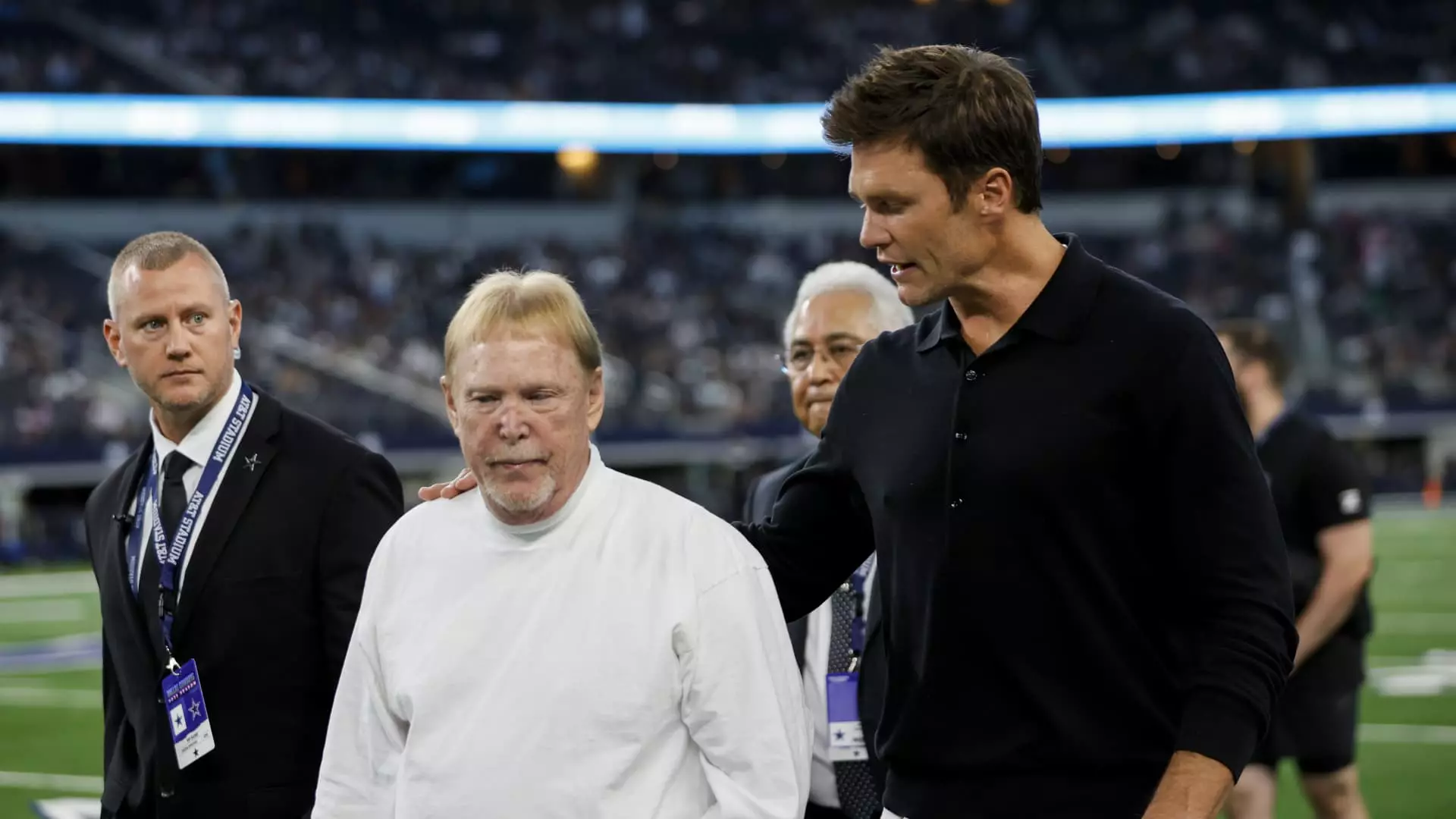In a significant move that signals a transformation in the landscape of professional sports ownership, seven-time Super Bowl champion Tom Brady has been approved as a minority owner of the Las Vegas Raiders. As the NFL continues to evolve, Brady’s entry into ownership not only highlights his influence beyond his playing days but also raises questions about the dynamic between players and team management.
Brady acquired about a 10% stake in the Raiders in partnership with Tom Wagner, founder of Knighthead Capital. The unanimous approval from NFL owners during a recent league meeting in Atlanta underscores the growing acceptance of former players transitioning into management roles, though it remains unclear what Brady actually paid for his share. According to CNBC’s 2024 NFL Team Valuations, the Raiders are valued at an impressive $7.8 billion, making them the fifth-most valuable franchise in the league today. This represents a remarkable turnaround from when the team was among the league’s least valued prior to its relocation from Oakland in 2020.
The Raiders’ financial success is further emphasized by their substantial revenue generation, earning approximately $780 million in 2023, which places them third in the league. Despite playing in Allegiant Stadium—one of the smallest stadiums in the NFL at 65,000 capacity—financial strategies such as the highest average ticket prices have elevated the franchise’s status. Brady’s investment comes at a time when franchises are exploring diverse revenue streams, making it an opportune moment for him to engage in ownership.
After his legendary career, Brady didn’t take long to pivot. His substantial broadcasting deal with Fox Sports, valued at $375 million over ten years, further positions him as a powerful media figure. However, the new ownership role does come with restrictions regarding his involvement with the Raiders. According to NFL guidelines, Brady cannot participate in team meetings or interact with players and coaches while serving as an owner. This dichotomy presents an interesting challenge for Brady, straddling the worlds of media and team ownership—two realms that rarely intersect.
Brady’s role as an owner contrasts sharply with his experiences as a player, suggesting a broader evolution of expectations for elite athletes. The restrictions imposed may create tension between his dual roles, particularly given his substantial media presence. The NFL has strict policies regarding the conduct of its owners, notably prohibiting public criticism of officials and other teams, which could pose challenges given Brady’s competitive nature.
Brady’s foray into Raiders ownership is particularly noteworthy as it reinforces the increasingly interconnected nature of sports franchises in Las Vegas. His minority ownership in the WNBA’s Las Vegas Aces, owned by Mark Davis (who also owns the Raiders), exemplifies the city’s appeal to high-profile athletes. Brady’s reputation and business acumen can contribute positively to the Raiders brand, fostering a fruitful relationship that may enhance community engagement and commercial opportunities.
Moreover, Brady’s entry into ownership raises discussions about athlete empowerment post-retirement. His influence can serve as a beacon for other retired players considering similar paths. The league has historically seen a select few players transition to ownership roles, and Brady’s move could inspire further interest from other athletes looking to leave a lasting legacy.
As the NFL continues adapting to modern social dynamics and changing fan interests, the introduction of owners with recent playing experience presents a remarkable opportunity. Tom Brady’s investment in the Raiders may redefine fan engagement, amplify franchise operations, and even affect sponsor relationships, given his massive following and influence.
Tom Brady’s new role as a minority owner encapsulates the shifting paradigms of the NFL and professional sports in general. It combines the historical, economic, and symbolic value of former players taking definitive roles in ownership, representing a shift towards a future where athlete involvement extends well beyond a singular career on the field. This evolution may very well redefine how franchises operate, setting a new standard for engagement and investment within the league.


Leave a Reply